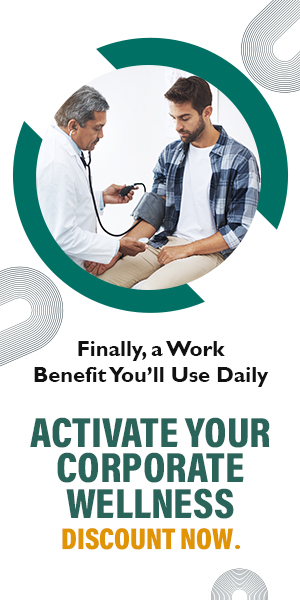Movement
Everything You Need to Know About Frozen Shoulders
Frozen shoulder, or adhesive capsulitis, is a condition characterised by pain and stiffness due to a thickened capsule around the shoulder joint. Know more about this condition by reading below:

Frozen shoulder, or adhesive capsulitis, is a condition that causes stiffness and pain in the shoulder joint. It occurs when the connective tissue surrounding the shoulder becomes inflamed and thickened, leading to restricted movement. The condition typically progresses through three stages:
Stages of Frozen Shoulders
- Freezing Stage: In this phase, any movement of the shoulder causes pain, leading to limited mobility. This stage can last between 2 to 9 months.
- Frozen Stage: While pain may decrease during this stage, stiffness increases, making shoulder use more challenging. This phase typically lasts from 4 to 12 months.
- Thawing Stage: During this period, shoulder mobility starts to improve. This stage can last anywhere from 5 to 24 months.
Need all your wellness solutions in one place? A whole new world awaits just a click away.
Symptoms of Frozen Shoulders
Symptoms of frozen shoulder include:
- Pain: A dull or aching pain in the shoulder, often worsening at night.
- Stiffness: Reduced range of motion, making it difficult to move the shoulder.
- Difficulty with daily activities: Challenges with tasks like reaching overhead, dressing, or lifting objects.
- Gradual onset: Symptoms typically develop slowly and may worsen over time.
Frozen shoulder, or adhesive capsulitis, typically develops due to inflammation and stiffness in the shoulder joint.
Related story: 6 Exercises You Can do at Your Desk to Ease Shoulder Pain
Common Causes of Frozen Shoulders
The shoulder joint is surrounded by a capsule made of connective tissue. Frozen shoulder occurs when this capsule thickens and tightens around the joint, limiting its range of motion.
Common causes include:
- Injury: Trauma to the shoulder can trigger inflammation.
- Immobility: Prolonged periods of inactivity, such as after surgery or an injury.
- Medical conditions: Diabetes, thyroid disorders, and cardiovascular diseases are associated with higher risk.
- Age and gender: This condition is more common in people aged 40 to 60 and often affects women more than men.
The exact cause can vary, but these factors often contribute to the condition.
Related story: 5 Moves to Ease the Knot in Your Shoulders
Who is at More Risk of Developing Frozen Shoulders?
Having to keep a shoulder still for a long period increases the risk of developing a frozen shoulder. This might happen after having surgery or breaking an arm.
Frozen shoulder primarily affects:
- Age: Individuals aged 40 to 60 are most commonly affected. Also, women are more likely to develop the condition than men.
- People with certain medical conditions: Those with diabetes, thyroid issues, cardiovascular disease, or Parkinson's disease are at higher risk.
- Individuals with prior shoulder injuries: Previous trauma or surgeries to the shoulder can increase susceptibility.
Related story: Improve Frozen Shoulder With These Exercises
Treatment for Frozen Shoulders
Treatment for frozen shoulders includes range-of-motion exercises. In some cases, corticosteroids and numbing medications may be injected directly into the joint to relieve the pain.
- Physical Therapy: A physical therapist will guide you through specific exercises to improve flexibility and range of motion. These may include gentle stretching and strengthening exercises tailored to your stage of frozen shoulder. The therapist may also use techniques like manual therapy to help mobilise the shoulder joint.
- Medications: Over-the-counter nonsteroidal anti-inflammatory drugs (NSAIDs) like ibuprofen or naproxen can help reduce pain and inflammation. In some cases, a doctor may prescribe stronger medications or corticosteroids to provide more significant relief.
- Heat and Ice Therapy: Applying heat (such as a warm compress or heating pad) can help relax muscles and increase blood flow to the area. Ice packs can reduce inflammation and numb pain. A common approach is to use heat before exercises and ice afterward.
- Injections: Corticosteroid injections can be administered directly into the shoulder joint to reduce inflammation and pain. This can provide significant relief, allowing for more effective physical therapy and improved mobility.
- Activity Modification: While it's important to stay active, avoiding movements that aggravate the shoulder is crucial. This may involve adjusting daily activities to prevent further irritation. Gradually incorporating gentle movements can help maintain some level of activity without causing pain.
- Surgery: If conservative treatments do not provide relief after several months, surgical options may be considered. Arthroscopic surgery can be performed to release the tight capsule around the shoulder joint, allowing for greater range of motion. This is generally considered a last resort when other treatments have failed.
Related story: 5 Moves To Rehabilitate Injured Shoulders
Exercises for Frozen Shoulders
We spoke to Vinay Aindala (Doctor of Physical Therapy), who currently holds the position of Senior Manager at UR.Life, Apollo Hospitals, Hyderabad. With over 11 years of extensive expertise in the field, he shared a range of highly effective exercises for frozen shoulders, suitable for individuals of all ages. Here are the exercises:
Pendulum Codman’s Exercise
- Stand next to a sturdy table or chair for support.
- Lean forward slightly at the waist, allowing your affected arm to hang down toward the floor.
- Let your arm relax completely, avoiding any tension.
- Gently swing your arm in small circles, starting with clockwise motions for about 30 seconds.
- Then switch to counterclockwise circles for another 30 seconds.
- You can also swing your arm forward and backward and side to side to further promote movement.
Finger Walk
- Stand facing a wall, about an arm's length away.
- Use the fingers of your affected arm to "walk" up the wall.
- Start with your fingers at waist height, then slowly walk them upward as high as you can comfortably go.
- Hold the position for a few seconds at the highest point, then walk your fingers back down.
Towel Stretch
- Take a towel and hold one end with your affected arm behind your back.
- Use your other hand to grab the other end of the towel above your shoulder.
- Gently pull the towel upwards with your unaffected arm to stretch the affected shoulder.
- Hold the stretch for 15-30 seconds, feeling a gentle pull.
Armpit Stretch
- Stand or sit comfortably, and lift your affected arm to shoulder height.
- Place your hand on a table or the back of a chair.
- Use your other hand to gently pull the affected arm across your body, feeling a stretch in the armpit and shoulder.
- Hold the stretch for 15-30 seconds.
Cross Body Reach
- Stand or sit comfortably.
- Use your unaffected arm to reach across your body and grasp the elbow of your affected arm.
- Gently pull your affected arm across your chest toward your opposite shoulder.
- Hold the stretch for 15-30 seconds, feeling a gentle stretch in the shoulder and upper back.
Biceps Stretch
- Stand with your feet shoulder-width apart.
- Extend your affected arm straight out to the side at shoulder height, palm facing forward.
- Slowly rotate your arm so that your palm faces backward.
- You can deepen the stretch by gently pulling back on your wrist with your other hand.
- Hold the stretch for 15-30 seconds.
Need all your wellness solutions in one place? A whole new world awaits just a click away.
Dealing with a frozen shoulder can be challenging – especially when it is preventing you from doing your daily activities. At UR.Life Studio, we offer a range of physical rehabilitation programmes that can help you regain full mobility with minimal pain. UR Life Studio offers the following programs under its Lifestyle Management and Therapeutic Programs (LMTP) unit:
- Cardiac Rehabilitation
- Pulmonary Rehabilitation
- Neuro Rehabilitation
- Ortho Rehabilitation
- Paediatric Rehabilitation
- Geriatric Rehabilitation
- Obesity Management
- Diabetes management
EXPLORE MORE
Instead of chasing long workouts, micro-movement shifts the focus from “Did I work out today?” to “Did I move often enough today?”
Pressed for time but craving results? These high-impact exercises burn maximum calories in minimum time, when done right.
Simple, practical fitness advice to help you feel stronger, healthier, and more consistent in 2026.
Callisthenics isn’t about flashy Instagram moves or avoiding the gym. According to celebrity fitness and lifestyle coach Krishna Sadvale, it’s one of the most practical ways to build strength, control, and confidence in your own body.






.jpg)

.jpg)
.jpg)
